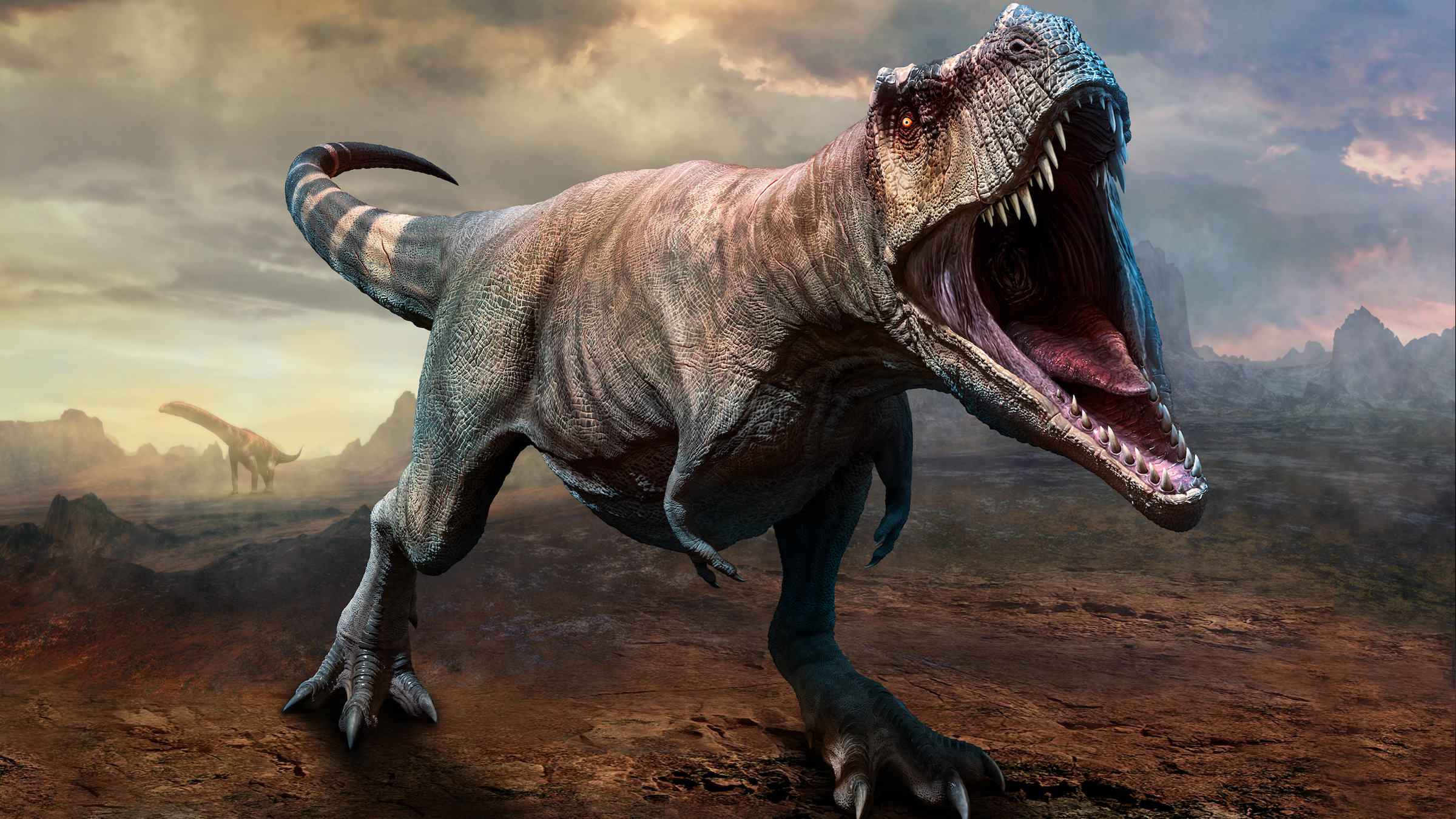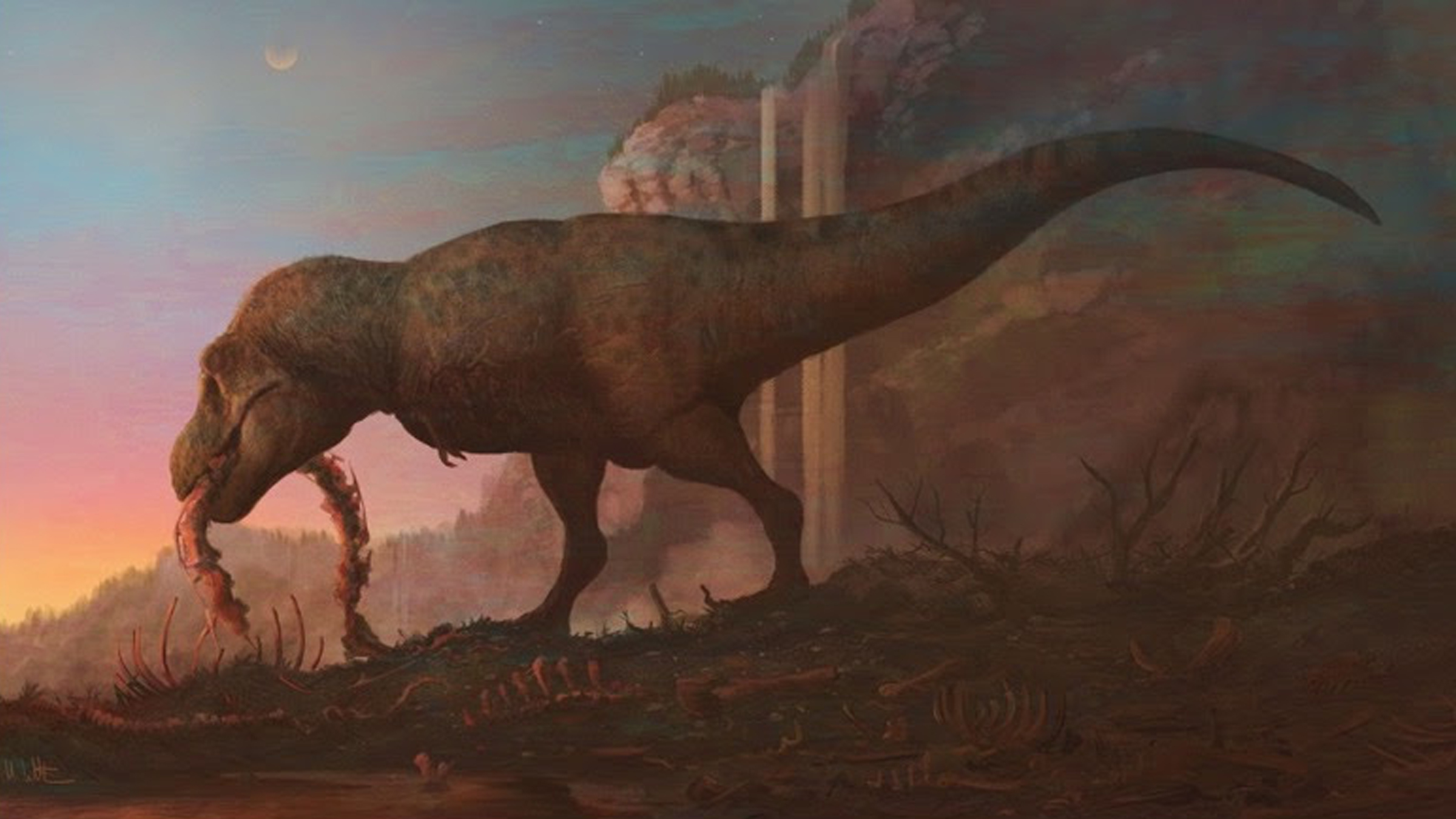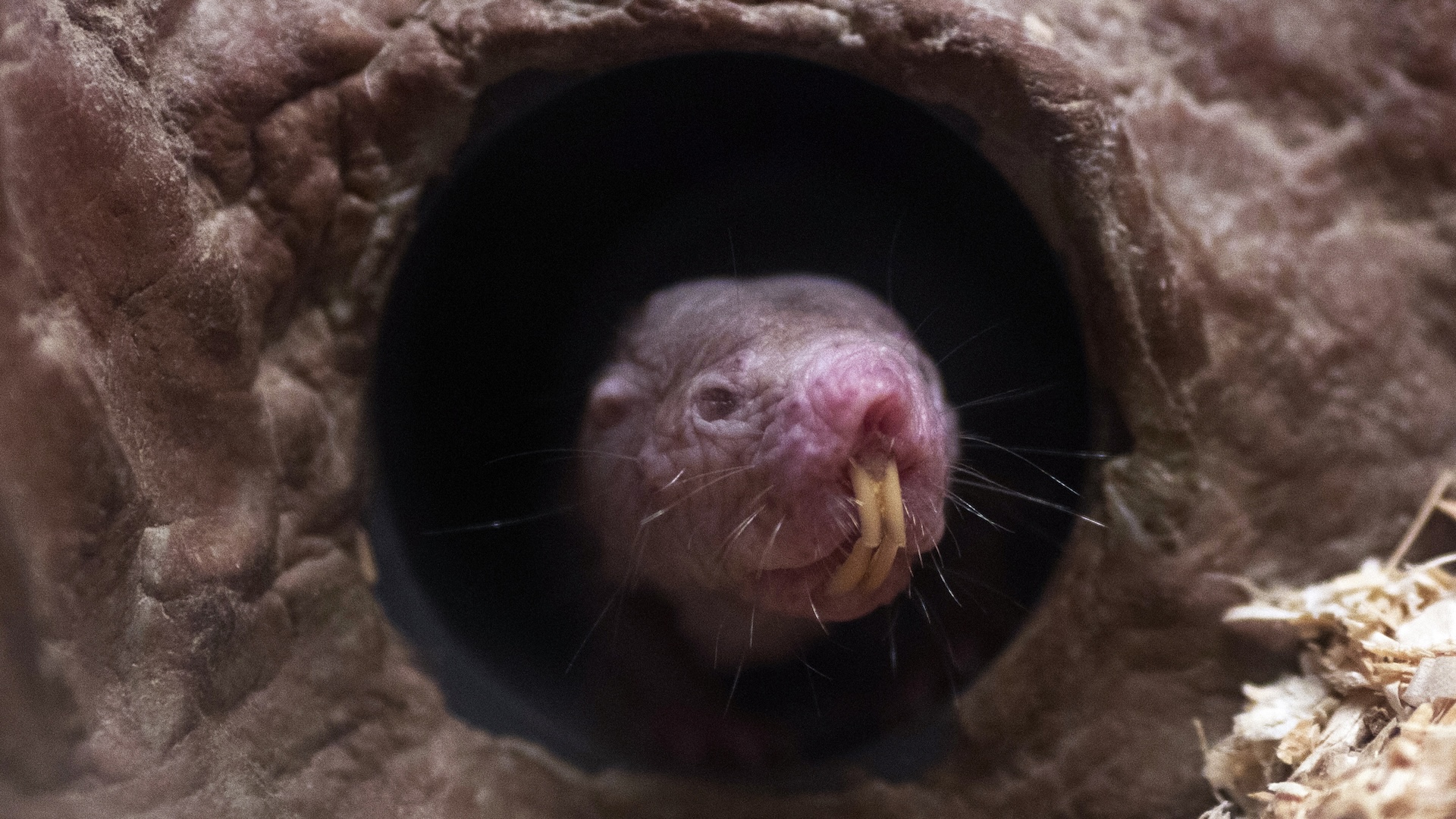'Bold theory' that Tyrannosaurus rex is 3 species gets stomped to pieces
But the original author calls the new study "paleopropaganda."

Is the mighty Tyrannosaurus rex really three dinosaur species, as a study claimed earlier this year? Fuggedaboutit, research from a new study says.
The rebuttal, published online today (July 25) in the journal Evolutionary Biology, shows that the T. rex "trio" study does not have the evidence to support its weighty ideas.
"Tyrannosaurus rex remains the one true king of the dinosaurs," study co-author Steve Brusatte, a paleontologist at the University of Edinburgh in Scotland, said in a statement released today by the American Museum of Natural History (AMNH) in New York City.
However, the lead author of the original study, Gregory Paul, an independent paleontologist, isn't convinced by the new results. "[It] is not a proper scientific study," Paul told Live Science in an email. "It comes across as paleopropaganda that appears to be structured to defend T. rex, rather than seriously explore the possibilities that fossil specimens of the genus Tyrannosaurus contained the more than one species that the genus certainly did."
Related: T. rex and its close relatives were warm-blooded like modern birds
Paul and his co-authors' controversial study, which was published March 2022, also in the journal Evolutionary Biology, proposed that T. rex was three separate species, which were identified as the standard T. rex, the bulkier T. imperator, and the slimmer T. regina. The authors based their findings on an analysis of femurs (thigh bones) and teeth from 38 T. rex individuals.
However, their study faced pushback even before its publication. The authors did not definitively assign a species to every specimen they analyzed — even those with well-preserved remains. As a result, Philip Currie, a well-known paleontologist at the University of Alberta in Canada, removed his name from the study before it came out, The New York Times reported at the time.
Get the world’s most fascinating discoveries delivered straight to your inbox.
Despite this controversy, Paul, who does not have a degree in the field, but has contributed to a tall stack of published studies, defended the paper. "I'm aware that there could be a lot of people who aren't going to be happy about this," Paul previously told The New York Times. "And my response to them is: Publish a refutation."
Now, a group of researchers with expertise in theropods — a group of bipedal, largely carnivorous dinosaurs that included T. rex and its close relatives — have done just that.
"Recently, a bold theory was announced to much fanfare: what we call T. rex was actually multiple species," Brusatte said in the statement. "It is true that the fossils we have are somewhat variable in size and shape, but as we show in our new study, that variation is minor and cannot be used to neatly separate the fossils into easily defined clusters. Based on all the fossil evidence we currently have, T. rex stands alone as the single giant apex predator from the end of the Age of Dinosaurs in North America."
In the new study, the researchers examined the data from the March study, in addition to data points from 112 species of birds — which are living dinosaurs — and four nonavian theropods, including Tarbosaurus bataar and Albertosaurus sarcophagus. Their analysis revealed that the "three species" proposal was based on a limited comparative sample, non-comparable measurements, and improper statistical techniques, according to the AMNH statement.
"Their study claimed that the variation in T. rex specimens was so high that they were probably from multiple closely related species of giant meat-eating dinosaur," study co-lead author James Napoli, a graduating doctoral candidate in AMNH's Richard Gilder Graduate School. "But this claim was based on a very small comparative sample. When compared to data from hundreds of living birds, we actually found that T. rex is less variable than most living theropod dinosaurs. This line of evidence for proposed multiple species doesn't hold up."
Related: Are birds dinosaurs?
It can be challenging to pin down species-defining variations in long-extinct animals, said study co-lead author Thomas Carr, a vertebrate paleontologist and an associate professor of biology at Carthage College in Wisconsin. This is why the authors of the new study looked at living dinosaurs, as well as extinct ones.
"Our study shows that rigorous statistical analyses that are grounded in our knowledge of living animals is the best way to clarify the boundaries of extinct species," Carr said in the statement. "In practical terms, the three-species model is so poorly defined that many excellent specimens can't be identified. That's a clear warning sign of a hypothesis that doesn't map onto the real world."
The March study suggested that when the researchers looked at multiple T. rex specimens, size variations in the second tooth on the lower jaw and in the robustness of the femur, revealed that the iconic dinosaur was, in fact, three species. However, the researchers on the new study could not replicate the tooth discovery. They even got different results when conducting simple measurements of the dental specimens.
Moreover, the researchers of the new study disagreed with how the original paper statistically determined the three species. In the original study, the statistical analysis defined the three groups before the test was actually run, so it could not blindly test the "trio" hypothesis, the authors of the new study said. In the new study, the researchers used a different statistical technique to see how many clusters existed within the data without any prior assumptions. Their results showed that T. rex is best considered as a single group — that is, as one species.
"The boundaries of even living species are very hard to define: for instance, zoologists disagree over the number of living species of giraffe," study co-author Thomas Holtz, a vertebrate paleontologist at the University of Maryland and at the Smithsonian National Museum of Natural History in Washington, D.C., said in the statement. "It becomes much more difficult when the species involved are ancient and only known from a fairly small number of specimens. Other sources of variation — changes with growth, with region, with sex, and with good old-fashioned individual differences — have to be rejected before one accepts the hypothesis that two sets of specimens are in fact separate species. In our view, that hypothesis is not yet the best explanation."
But Paul disagreed with the assessment from the new study, calling it "a significantly flawed work that fails to refute the data and analysis presented by Paul et al. (2022), and has errors of its own," Paul told Live Science in an email in which he included a long list of disagreements he had with the new publication.
Paul also took issue with the fact that the original study "took a dozen years to produce," while the new study "was produced in a few weeks, reviewed and published in just months and the adverse results show."
T. rex is famous in the dinosaur world and popular culture, "so it's important that we get this right," new study co-author David Hone, a senior lecturer of zoology at Queen Mary University of London. "There is still a good chance that there is more than one species of Tyrannosaurus out there, but we need strong evidence to make that kind of decision."
Originally published on Live Science.

Laura is the archaeology and Life's Little Mysteries editor at Live Science. She also reports on general science, including paleontology. Her work has appeared in The New York Times, Scholastic, Popular Science and Spectrum, a site on autism research. She has won multiple awards from the Society of Professional Journalists and the Washington Newspaper Publishers Association for her reporting at a weekly newspaper near Seattle. Laura holds a bachelor's degree in English literature and psychology from Washington University in St. Louis and a master's degree in science writing from NYU.

